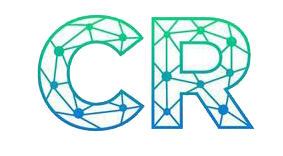Key Takeaways
What’s the key development?
Citigroup has integrated Coinbase’s settlement rails to support faster global payments for institutional clients.
What changes next?
If corporate clients route cross-border payments through these new rails, settlement could shift away from the SWIFT-era correspondent banking model toward stablecoins.
Citigroup and Coinbase have announced a global payments infrastructure. The partnership, announced on 27 October, signals how traditional banks and crypto firms are converging to rebuild the financial system’s core settlement rails.
The deal will enable Citi’s institutional clients to route fiat payments and transactions through Coinbase’s on- and off-ramp pathways. This enables faster settlement and direct access to on-chain liquidity.
Citi, which operates in 94 markets and connects to more than 300 payment networks, is positioning the collaboration as a way for multinational corporations to use blockchain-based settlement without needing direct crypto exposure.
Banks aren’t sitting out anymore — they’re plugging in
This partnership with Coinbase marks a shift from “crypto as a speculative asset” to crypto as a settlement infrastructure. Citi and Coinbase said they will also explore on-chain payout methods, hinting at stablecoin-based settlement as the next phase.
This move aligns with the broader environment shaped by the GENIUS Act, the new U.S. federal framework that legally defines and regulates dollar-backed stablecoins.
Western Union is moving toward the same rails
The shift isn’t happening in isolation. Western Union, one of the world’s largest cross-border remittance providers, confirmed during its latest earnings call that it is testing stablecoin settlement to cut reliance on correspondent banking.
The company noted that dollar stablecoins can settle instantly, which is an advantage over multi-day remittance clearing.
Meanwhile, Crypto.com is trying to become a bank
While Citi integrates with crypto-native infrastructure, Crypto.com has applied for a U.S. National Trust Bank Charter. This would allow it to operate nationwide as a regulated crypto custodian.
The filing suggests exchanges are no longer content to sit outside the banking system—they’re trying to enter and reshape it.
Why this matters
The financial system is beginning to decouple settlement from the SWIFT network and correspondent banks. Instead, hybrid fiat-to-stablecoin-to-fiat flows are emerging as the new standard.
For Coinbase, the deal deepens its institutional foothold. For Citi, it is a hedge toward tokenized finance. For the industry, it signals that Global money movement is being rewired from inside the system, not outside it.
What to watch next
The key development now is whether Citi’s corporate clients begin routing cross-border transactions through Coinbase-linked settlement rails, and when stablecoin payout support goes live.
Progress on Crypto.com’s banking charter will also serve as a barometer for how quickly crypto firms gain regulated financial status.
At the same time, Western Union’s pilots could expand into its highest-volume remittance corridors, accelerating migration away from legacy clearing networks.







